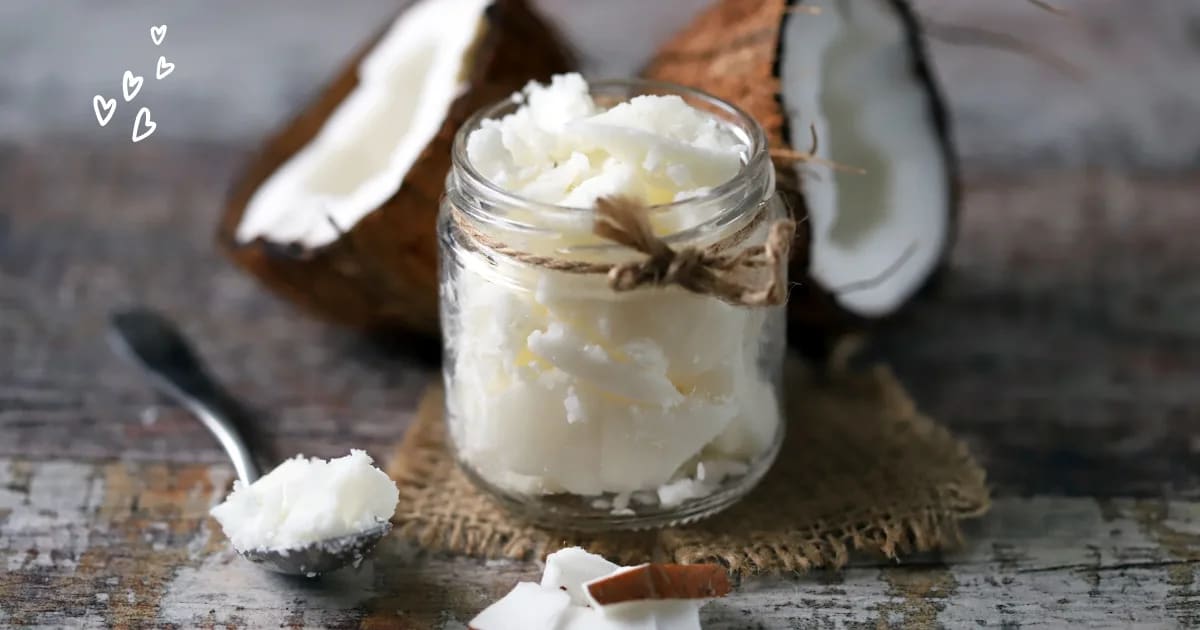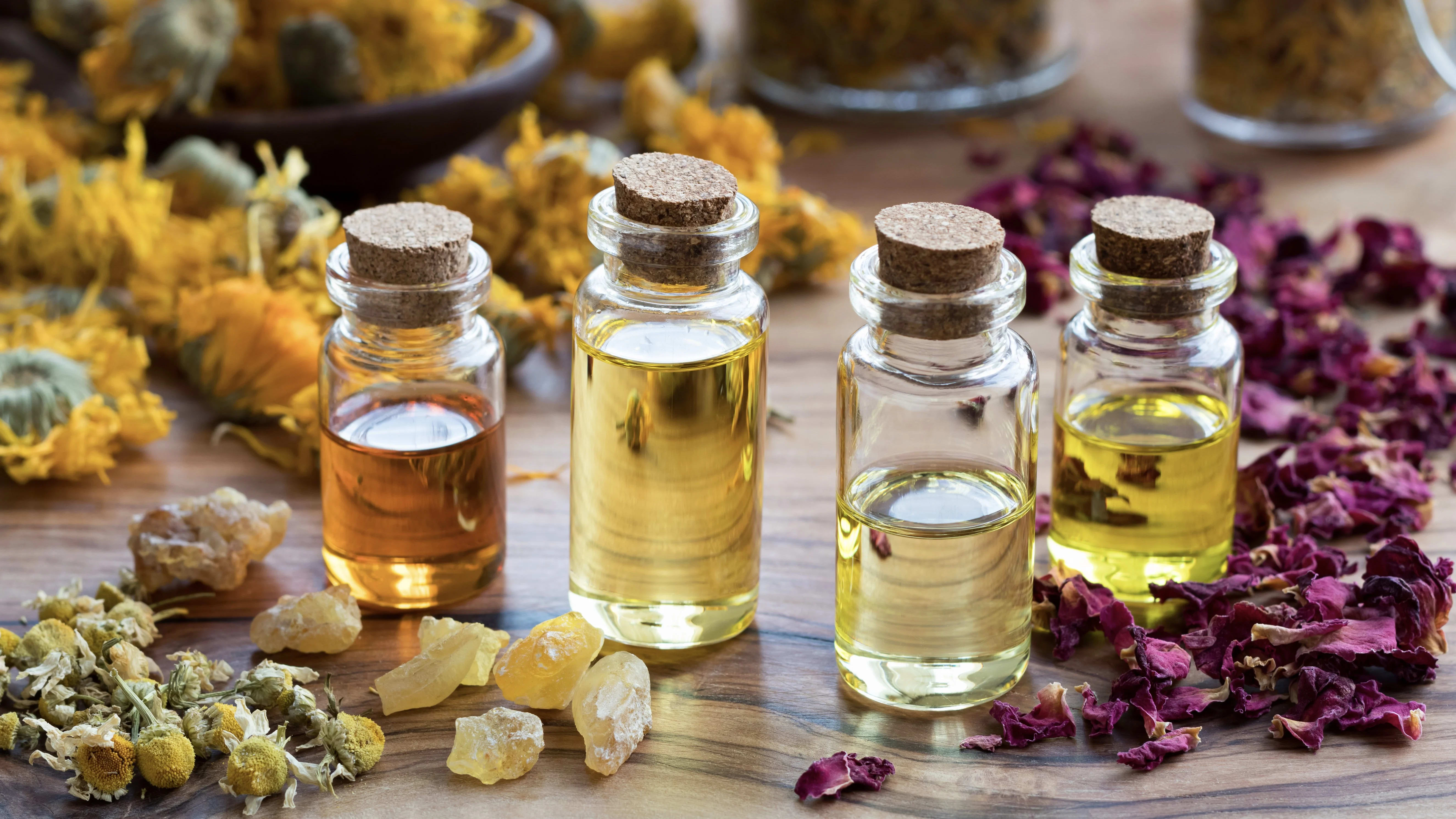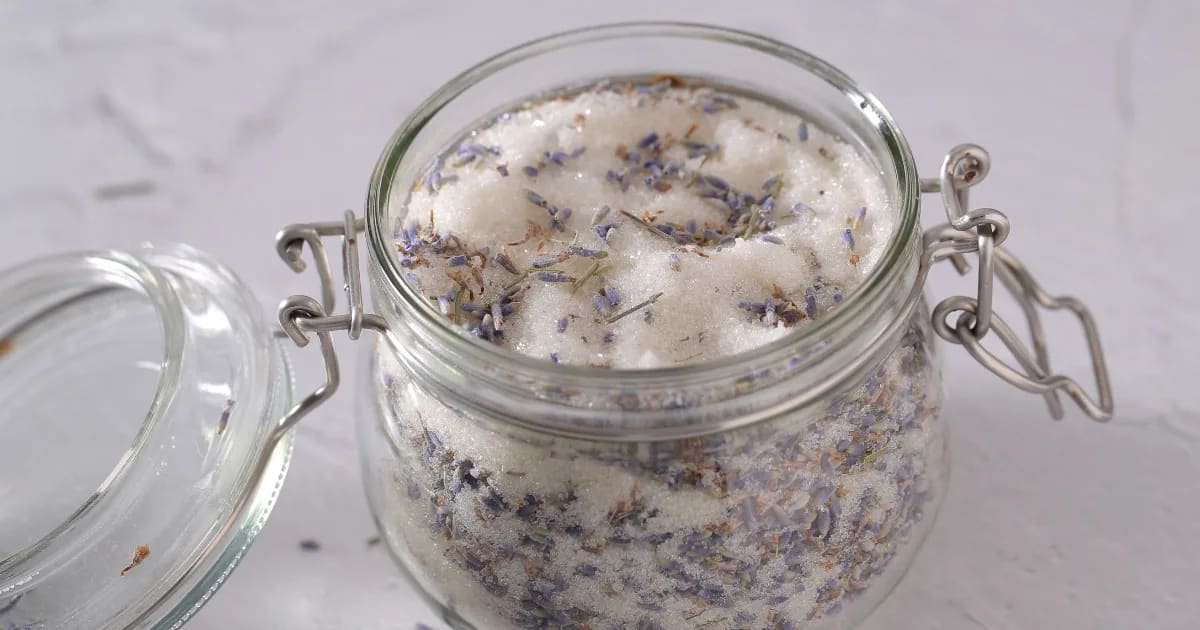The Coconut Oil Conundrum: Unrefined or Fractionated?

Coconut Confusion
The fresh, tropical aroma of coconut oil speaks to me of the heart of summer, bringing to mind my favorite island locations (which I sometimes visit to meet distillers and small-scale farmers). Coconut oil is beautifully nourishing in skincare blends, or on its own. If I run out of my favorite body butter and don’t have time to whip up another batch, I can simply reach into my pantry for my organic coconut oil. It makes a wonderful moisturizer straight out of the jar.
But I’ve noticed some confusion in the natural skincare world. Which is better—unrefined or fractionated coconut oil?
Today, you’ll discover the difference between unrefined and fractionated coconut oil. We’ll also discuss:
How fractionated coconut oil is made.
The skin healing benefits of lauric acid in unrefined coconut oil.
Why I prefer unrefined coconut oil for skincare.
A no-heat recipe for Cooling Coconut Body Butter with shea butter.
By the end of this post, you’ll be able to choose which kind of coconut oil is best for you, and for your essential oil blends. Each type has its benefits!
What is Unrefined Coconut Oil?
Cold-pressed unrefined coconut oil is packed with medium-chain triglycerides, including essential fatty acids such as lauric acid, myristic acid, and more.
Lauric acid is known for antibacterial, anti-inflammatory, skin nourishing, and wound healing properties.
Unrefined coconut oil also contains vitamin E, making it even more healing for skin. I love using unrefined coconut oil to reduce fine lines and wrinkles.
The medium-chain fatty acids in unrefined coconut even give it antiviral properties, as they can disrupt the lipid membranes of some viruses.
The fatty acids in coconut oil vary in weight. Some are heavier than others, and solidify at room temperature. That’s why unrefined coconut oil can be solid depending on the temperature of your room. You might find your coconut oil a firm white solid one day, and a clear liquid the next. It’s a natural variation as the coconut oil responds to its environment.
What is Fractionated Coconut Oil?
Fractionated coconut oil is like the lighter, more versatile sibling of unrefined coconut oil.
Here’s how it’s made: when coconut oil is heated past a certain temperature (usually around 140°F/60°C), the heavier fatty acids settle at the bottom, while the lighter ones float to the top. The oil is allowed to cool (sometimes quickly, but it can also just be allowed to come back to room temperature). When it cools, the heavier fatty acids solidify on the bottom . . . but the lighter ones remain on the top in liquid form.
This light, agile liquid is essentially a fraction of the original oil—our “fractionated coconut oil.” It includes the lighter, more easily absorbed fatty acids, including caprylic and capric acids.
What’s the Difference between Unrefined and Fractionated Coconut Oil?
Unrefined coconut oil contains the full spectrum of medium-chain fatty acids, including lauric acid and myristic acid. It retains that characteristic, tropical aroma of coconuts.
It’s often in a solid form in cool conditions. The melting point is 78° F or 25° C. So when we’re using it for skincare, it’s best stored in a jar. We have a few options…
Melt it into a body butter along with other natural carrier oils and butters, like shea butter.
Melt it by itself before adding essential oils to it.
While unrefined coconut oil might be solid, it’s often soft enough to use without melting over the stove. So we can use it as it is, allowing it to melt on contact with our skin.
If you’re going to melt unrefined coconut oil, there’s no need to feel concerned that you’ll unintentionally fractionate your oil. Just use a low heating setting. It doesn’t take much to melt coconut oil!
Fractionated coconut oil is composed mostly of caprylic and capric acids, which are liquid regardless of the temperature they’re stored at. This makes it a popular go-to for aromatherapists who want to blend essential oils into a liquid carrier oil.
It also doesn’t retain much of that familiar coconut aroma.
Fractionated coconut oil is ideal if you’re making roll-on blends or using dropper bottles.
Which Type of Coconut Oil is Best for Skincare?
Personally, I prefer using unrefined coconut oil for my blends. I want to nourish my skin with the full spectrum of fatty acids in the unrefined oil, especially the healing lauric and myristic acids.
A few small studies show caprylic acid can offer similar benefits as lauric acid, but lauric acid does seem to have more to offer. This is not to say that fractionated coconut oil doesn’t offer benefits to your skin. It does! It’s just that unrefined coconut oil outperforms it for skincare.
However, if you prefer to use liquid carriers for your essential oils, fractionated coconut oil offers a wonderful solution.
A Coconut Oil Recipe

Cooling Coconut Body Butter
This recipe combines unrefined coconut oil with shea butter—and it doesn’t require any stovetop melting. You can make it with an immersion blender (aka a “stick blender”).
You’ll need a 2 oz (60 ml) glass jar for this recipe.
Ingredients
1 oz (28 g) unrefined Coconut Oil (Cocos nucifera)
1 oz (28 g) Shea Butter (Butyrospermum parkii or Vitellaria paradoxa)
4 drops Rose absolute (Rosa damascena)
4 drops Lemon (Citrus limon)
2 drops Sandalwood (Santalum album)
Directions
Measure out the room-temperature coconut oil and shea butter.
In a mixing bowl, combine the coconut oil and shea butter. Using an immersion or stick blender, blend the mixture until it becomes smooth and creamy.
Once the base is creamy, add the Rose absolute (Rosa damascena), Lemon (Citrus limon), and Sandalwood (Santalum album) essential oils.
Use the immersion or stick blender to thoroughly incorporate the essential oils into the body butter.
Transfer the body butter to a clean jar with a lid. Store it at room temperature.
Apply the body butter to your skin after showering or whenever your skin needs extra moisture. Massage in circular motions until fully absorbed. The cooling and nourishing properties of the coconut oil and shea butter, combined with the aromatic benefits of the essential oils, will leave your skin feeling refreshed and rejuvenated.
My Takeaway
In the world of natural skincare, both unrefined and fractionated coconut oil have their unique strengths. Unrefined coconut oil offers a rich, full spectrum of fatty acids and antioxidants, making it a deeply nourishing choice for your skin. Its solid form at room temperature adds a tactile, luxurious experience to your skincare routine.
On the other hand, fractionated coconut oil provides a light, versatile, and easily absorbed alternative, perfect for aromatherapy blends and liquid applications, especially if you aren't concerned with using this carrier as a therapeutic nourishing skin carrier.
My personal preference leans towards the nutrient-rich, unrefined coconut oil, but both types have valuable roles to play. Ultimately, the best choice depends on your specific skincare needs and how you enjoy incorporating coconut oil into your routine.

References
Bobiński, R., Wyszomirski, M., Machnickam, A., Pielesz, A., Kawecki, M., Waksmańska, W., Staniszewski, L. (2020) The Effect of Lauric Acid on Pathogens Colonizing the Burn Wound: A Pilot Study. Alternative Therapies in Health and Medicine. 2020 Mar;26(2):23-27. PMID: 31634869.
DebMandal, M., Mandal, S. (2011) Coconut (Cocos nucifera L.: Arecaceae): in health promotion and disease prevention. Asian Pacific Journal of Tropical Medicine. 2011 Mar;4(3):241-7. doi: 10.1016/S1995-7645(11)60078-3. Epub 2011 Apr 12. PMID: 21771462.
Keen, M.A., & Hassan, I. (2016). Vitamin E in dermatology. Indian dermatology online journal, 7(4), 311–315. https://doi.org/10.4103/2229-5178.185494
Nair, MK., Joy, J., Vasudevan, P., Hinckley, L., Hoagland, TA., Venkitanarayanan, KS. (2005) Antibacterial effect of caprylic acid and monocaprylin on major bacterial mastitis pathogens. Journal of Dairy Science. 2005 Oct;88(10):3488-95. doi: 10.3168/jds.S0022-0302(05)73033-2. PMID: 16162522.





